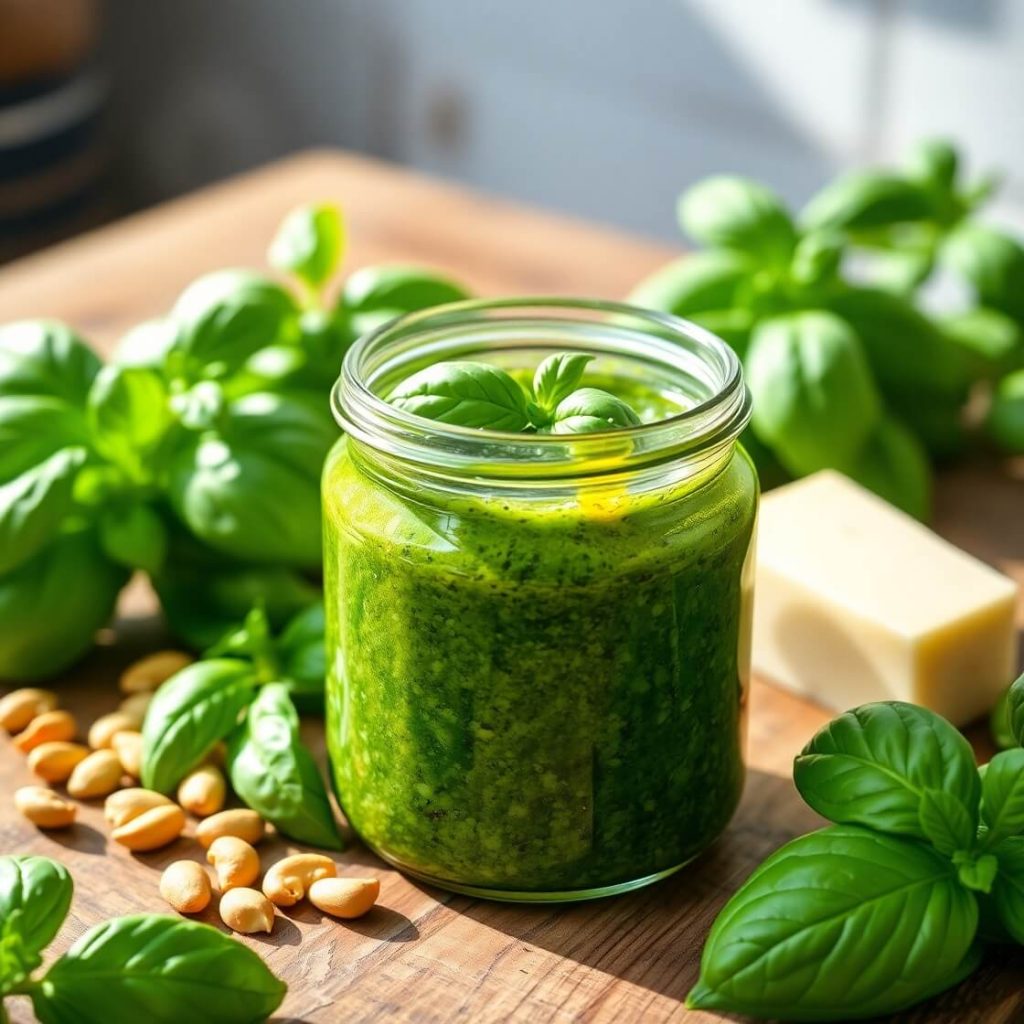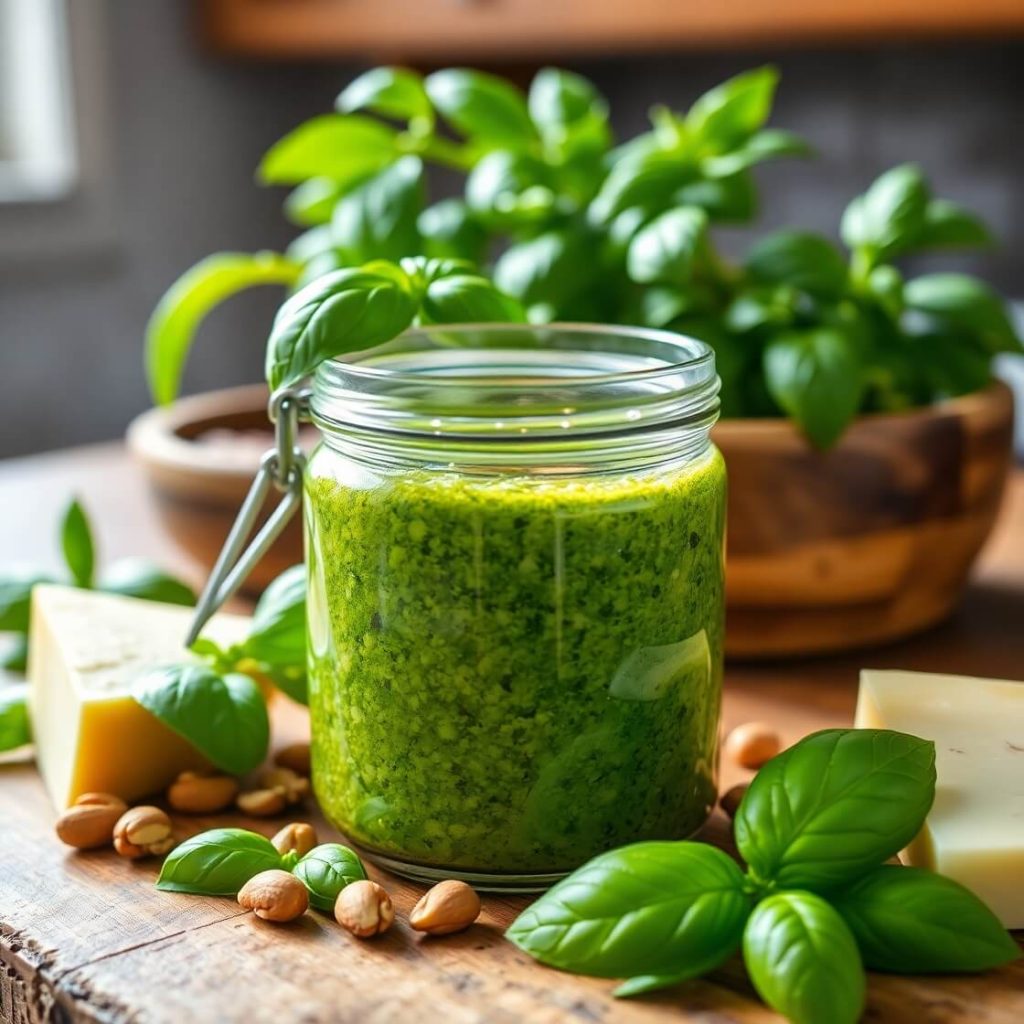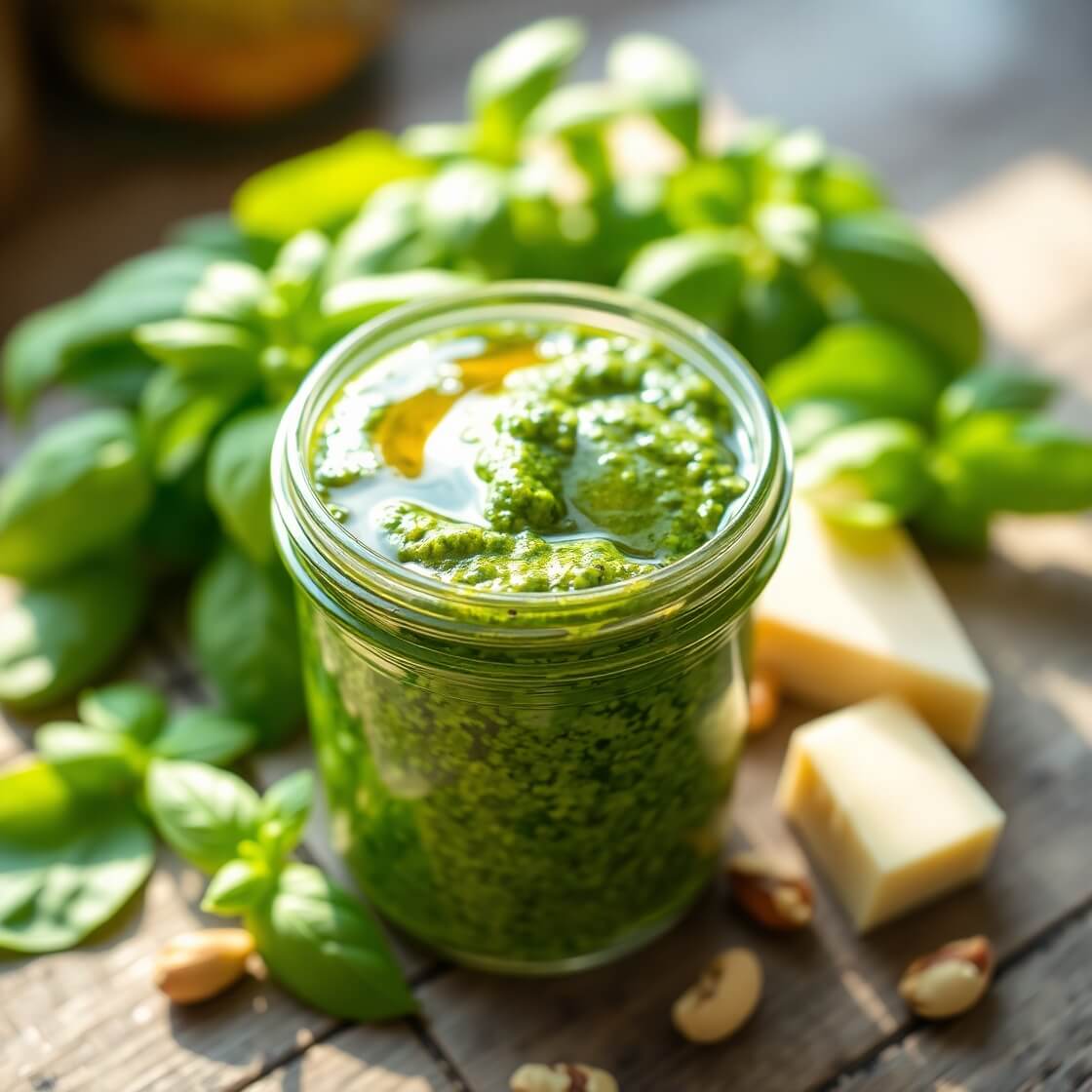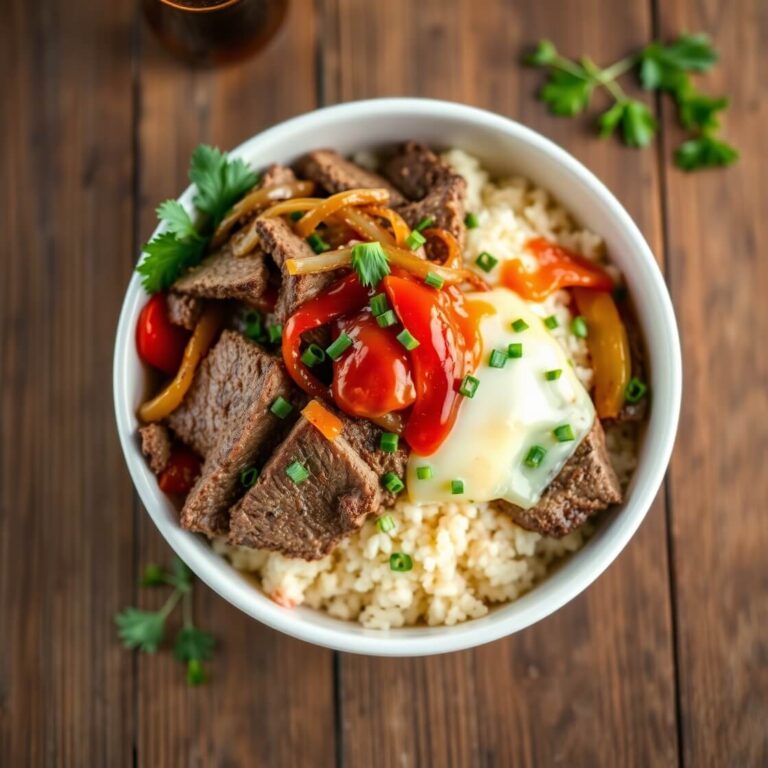There’s something magical about the aroma of fresh basil, garlic, and pine nuts coming together to create a vibrant green sauce that can transform any dish. I remember the first time I made homemade pesto—it was one of those moments where I realized how simple ingredients could create something extraordinary. Store-bought pesto always tasted good, but there was a certain freshness, a zing, a depth of flavor that only comes from making it yourself.
This recipe is my go-to whenever I want to elevate a simple pasta, spread a little magic on a sandwich, or even drizzle over roasted vegetables. The best part? It only takes a handful of ingredients, and the flavor is unbelievably fresh. Once you make your own pesto, it’s hard to go back to anything else.
Stick with me, and I’ll walk you step by step on how to make this classic Italian sauce in your own kitchen, giving you tips, substitutions, and ideas to make it perfect every single time.
Why I Love This Recipe
I love this homemade pesto recipe for so many reasons. First, it’s incredibly versatile. You can toss it with pasta, slather it on grilled chicken, mix it into a potato salad, or even stir it into soups for a pop of fresh flavor.
Second, the freshness is unparalleled. When you grind fresh basil, pine nuts, garlic, and parmesan together with olive oil, the aroma fills your kitchen in a way that’s both comforting and invigorating. It’s like bottling summer in a jar.
Another reason I adore this recipe is how quick and easy it is. With just a food processor or blender, a few ingredients, and less than 15 minutes, you can create something that tastes like it came straight from an Italian trattoria. People make this recipe because it’s simple, elegant, and elevates everyday meals without requiring hours in the kitchen.
Homemade pesto also has that personal touch. You can adjust the garlic, lemon, or cheese to your taste, and experiment with different nuts or greens to create your own signature version. Every batch has a little of your personality in it, and that’s what makes it special.
Ingredients for Homemade Pesto
To make this classic pesto, you’ll need a few high-quality ingredients. The secret to a vibrant and flavorful pesto is using fresh produce and the best olive oil you can find. Here’s what you’ll need:
- Fresh basil leaves, washed and dried. Basil is the star of this recipe, and the fresher, the better.
- Pine nuts. They add a subtle nuttiness and creamy texture.
- Garlic cloves. I like using two large cloves, but you can adjust to taste.
- Parmesan cheese, freshly grated. Avoid pre-shredded for the best flavor.
- Extra-virgin olive oil. This ties everything together and gives a smooth, rich finish.
- Salt and pepper to taste. Enhances all the flavors without overpowering.
- Optional: a squeeze of fresh lemon juice. This brightens the pesto and balances the richness.
You might also experiment with variations—walnuts or almonds instead of pine nuts, or even a mix of spinach or arugula with basil for a different twist.
How Much Time Will You Need
The beauty of homemade pesto is how fast it comes together. You’ll spend about 10-15 minutes prepping and blending the ingredients. No long simmering, no complicated steps. From start to finish, you can have pesto ready to enjoy in under 20 minutes. If you’re making it ahead of time for a meal later, you’ll need a few extra minutes for storing and chilling.
How to Make This Homemade Pesto

Making pesto is all about layering flavors and keeping it simple. Here’s my step-by-step guide:
Step – 1: Wash and prepare your basil. Remove the leaves from the stems and pat them dry with a clean kitchen towel. Wet leaves can dilute the flavor and make the pesto watery.
Step – 2: Toast the pine nuts. This is optional but highly recommended. Heat a small skillet over medium heat and lightly toast the nuts until golden and fragrant. Watch carefully—they can burn quickly. Toasting enhances their flavor and gives your pesto a richer taste.
Step – 3: Combine the basil, garlic, and pine nuts in a food processor. Pulse a few times until roughly chopped. This ensures a uniform texture before adding oil.
Step – 4: Add the parmesan cheese and a pinch of salt and pepper. Pulse again to combine.
Step – 5: Slowly drizzle in the olive oil while the processor is running. Start with a little and adjust until you get the consistency you like. Some prefer a thicker pesto for spreading, while others like it more fluid for tossing with pasta.
Step – 6: Taste and adjust. Add more salt, pepper, or a squeeze of lemon juice to brighten the flavors.
Step – 7: Serve immediately or store in a jar with a thin layer of olive oil on top to preserve freshness.
Substitutions
Don’t have pine nuts? No problem. Walnuts, almonds, or cashews make excellent alternatives, each bringing a slightly different flavor.
If you’re dairy-free, you can replace parmesan with nutritional yeast—it adds a cheesy, nutty flavor without the dairy.
Want to experiment with greens? Swap some basil for arugula, spinach, or even kale for a unique twist. Each change will give your pesto a slightly different character but keep the essence of the sauce intact.
Best Side Dishes for Homemade Pesto
Pesto pairs beautifully with so many dishes. Here are three of my favorites:
- Tossed with pasta and a sprinkle of extra parmesan. Simple and classic.
- Spread over grilled chicken or fish for a fresh, herbaceous flavor.
- Drizzled on roasted vegetables to elevate an everyday side dish.
Serving and Presentation Tips
Serving homemade pesto is as much about presentation as it is about taste. One of my favorite ways to present pesto is in a small glass jar or ramekin, with a thin drizzle of extra-virgin olive oil on top. This not only keeps it fresh but gives it that glossy, vibrant look that immediately makes your dish feel special.
When tossing pesto with pasta, I like to add a few whole basil leaves as a garnish. It adds a pop of green, a fresh aroma, and signals freshness to your guests. For roasted vegetables or grilled meats, a gentle spoonful on top, slightly off-center, creates a rustic, yet elegant look. You can even sprinkle a few toasted pine nuts over the top for texture and visual appeal.
Serving pesto doesn’t have to be complicated. A simple drizzle, a sprinkle of cheese, and a fresh herb garnish can turn any meal into something that looks restaurant-quality.
Tips and Tricks to Make This Recipe Better

There are a few tricks I’ve learned over the years that elevate homemade pesto from good to unforgettable.
First, always use fresh basil. Wilted or older leaves can make the pesto taste bitter and dull. Wash the leaves gently and make sure they are completely dry before processing.
Second, toast your nuts lightly. Even a short time on medium heat can release deep, nutty flavors that make the pesto richer and more aromatic.
Third, add the olive oil gradually. This allows you to control the consistency and prevents the sauce from separating. Some people like a thicker pesto for spreading, while others prefer a more fluid version for pasta—drizzle slowly and taste as you go.
Lastly, don’t forget to adjust seasoning at the end. A pinch of salt, fresh ground pepper, or a little lemon juice can brighten the flavors and balance richness. Taste is personal, so experiment until it feels perfect for you.
Common Mistakes to Avoid
Even with a simple recipe like pesto, a few common mistakes can make a difference.
One mistake is over-processing. Blitzing the basil too much can turn your pesto into a puree that loses its texture and vibrancy. Pulse gently to keep some structure.
Another common error is adding too much garlic. While garlic is essential, it can overpower the delicate basil if not balanced. Start with less—you can always add more.
Using pre-shredded parmesan is tempting, but it contains anti-caking agents that can make your pesto grainy. Freshly grated cheese is always the best choice.
Lastly, skipping the olive oil layer when storing can cause the pesto to oxidize and turn brown. A thin layer of oil on top preserves the color and flavor.
How to Store It
Homemade pesto can be stored in a few ways to maximize freshness.
In the refrigerator, keep it in an airtight jar with a thin layer of olive oil on top. It will last up to a week this way. For longer storage, consider freezing. Ice cube trays work wonderfully—portion out pesto, freeze, and then transfer cubes to a freezer bag. This way, you can use exactly what you need for pasta or sauces without thawing the whole batch.
Another tip: if storing for the fridge, place plastic wrap directly on the surface of the pesto before sealing the jar. This reduces air exposure and keeps the vibrant green color.
FAQ
Can I make pesto without a food processor?
Absolutely! You can finely chop all ingredients by hand and whisk in olive oil gradually. It takes a bit more elbow grease but works beautifully.
How long does homemade pesto last?
Refrigerated with an olive oil layer, it lasts about 5–7 days. Frozen in portions, it can last up to 3 months.
Can I use other herbs instead of basil?
Yes! Arugula, spinach, parsley, or even cilantro can be used. Keep in mind that the flavor profile will change slightly.
Is pesto gluten-free?
Yes! Traditional pesto contains no gluten. Always check the parmesan for additives if you are strictly gluten-free.
Can I make pesto vegan?
You can. Simply replace parmesan with nutritional yeast or a vegan cheese alternative. The texture and flavor will still be rich and delicious.

Homemade Pesto Recipe
A bright, flavorful, and versatile Italian sauce that brings freshness to pasta, sandwiches, grilled meats, and roasted vegetables. With only a handful of ingredients, this pesto is easy to make, adaptable, and bursting with the natural taste of basil and garlic. Perfect for anyone looking to add a touch of gourmet magic to everyday meals.
- Total Time: 15 minutes
- Yield: 1
Ingredients
- 2 cups fresh basil leaves, packed
- 1/3 cup pine nuts (toasted)
- 2 large garlic cloves
- 1/2 cup freshly grated parmesan cheese
- 1/2 cup extra-virgin olive oil
- Salt and pepper to taste
- Optional: 1 teaspoon fresh lemon juice
Instructions
- Wash and dry basil leaves thoroughly.
- Toast pine nuts lightly in a skillet over medium heat until golden.
- Combine basil, garlic, and pine nuts in a food processor; pulse until roughly chopped.
- Add parmesan, salt, and pepper; pulse again to combine.
- While processing, slowly drizzle in olive oil until desired consistency is reached.
- Taste and adjust seasoning with more salt, pepper, or lemon juice.
- Serve immediately or store in an airtight container with a layer of olive oil on top.
Notes
- For a nut-free version, use sunflower seeds or omit nuts entirely.
- Use freshly grated parmesan for the best flavor.
- Drizzle over pasta, grilled meats, or roasted vegetables for maximum enjoyment.
- Prep Time: 10 minutes
- Cook Time: 0 minutes
- Category: Sauce / Condiment
- Method: No-cook
- Cuisine: Italian
- Diet: Vegetarian
Nutrition
- Serving Size: 1
- Calories: 150
- Sugar: 0.5g
- Sodium: 120mg
- Fat: 14g
- Saturated Fat: 2.5g
- Unsaturated Fat: 11g
- Trans Fat: 0g
- Carbohydrates: 2g
- Fiber: 0.5g
- Protein: 3g
- Cholesterol: 5mg








